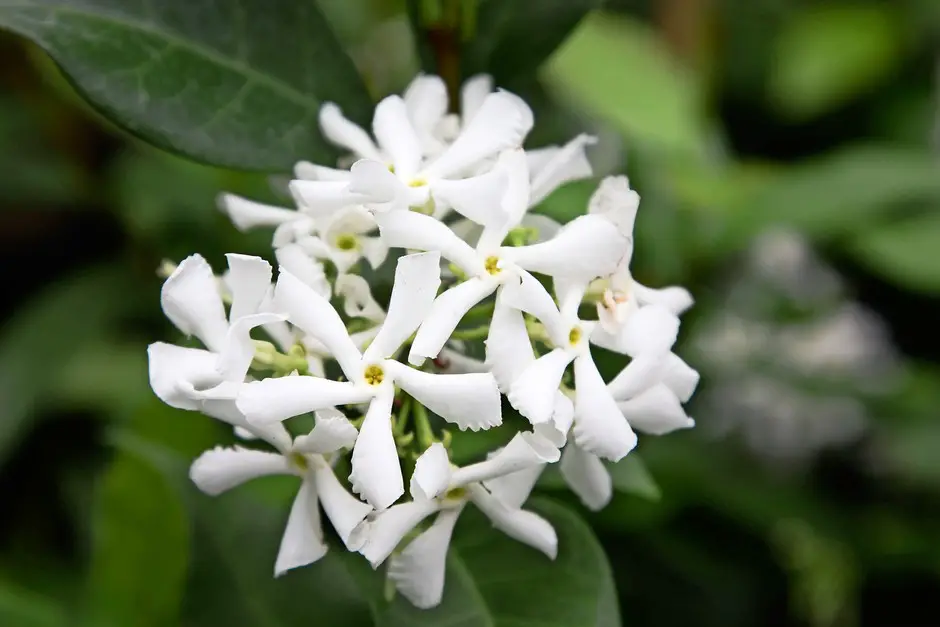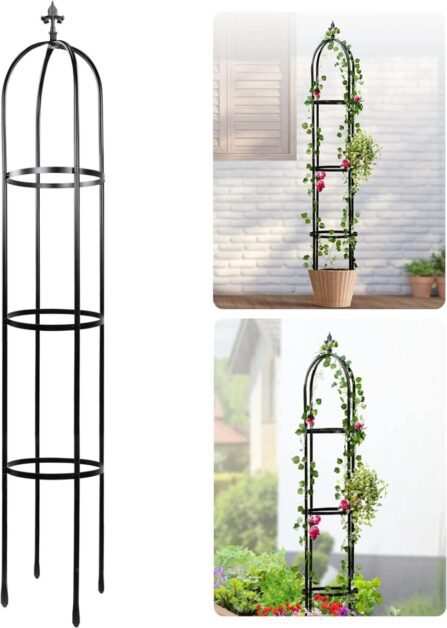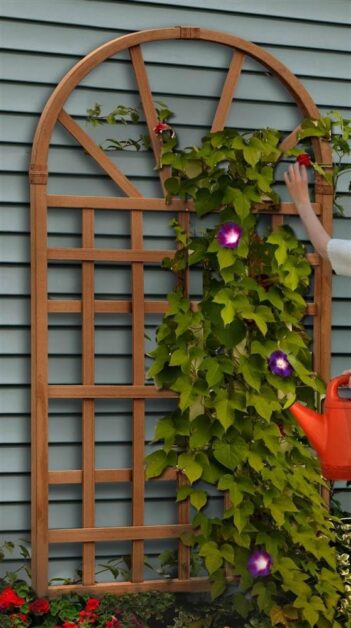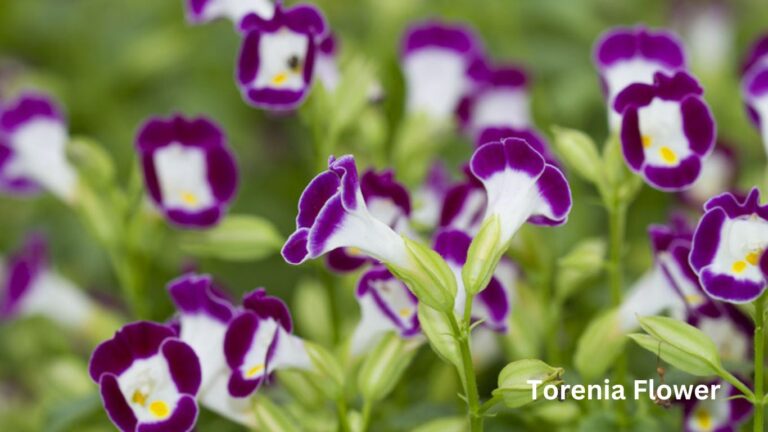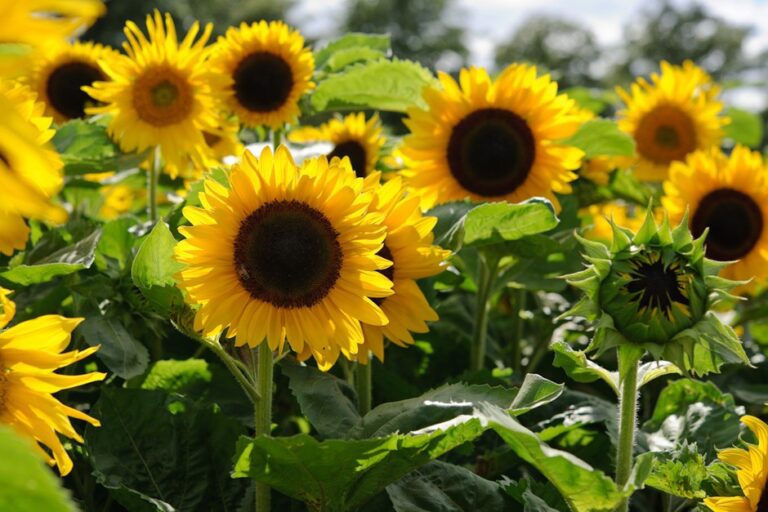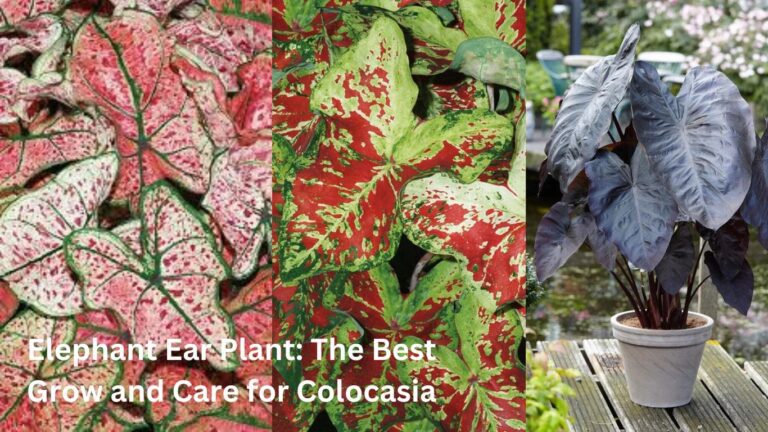Star Jasmine: A Fragrant and Vigorous Climber
Star Jasmine, also known as Trachelospermum jasminoides, is a popular evergreen vine that is native to Asia. It’s a great addition to any garden, as it produces fragrant white flowers and can grow up to 20 feet tall. One interesting fact about Star Jasmine is that it’s often used in traditional Chinese medicine to treat various ailments.
As an expert in gardening, I can tell you that Star Jasmine is a great choice for anyone looking to add some greenery to their yard. It’s easy to care for, and its fragrant flowers make it a great addition to any garden. So if you’re looking for a low-maintenance plant that will add some beauty to your yard, Star Jasmine is a great choice.
Table of Contents
Growing Conditions for Star Jasmine
Star Jasmine, also known as Trachelospermum jasminoides, is a versatile and popular flowering vine that thrives in a variety of growing conditions.
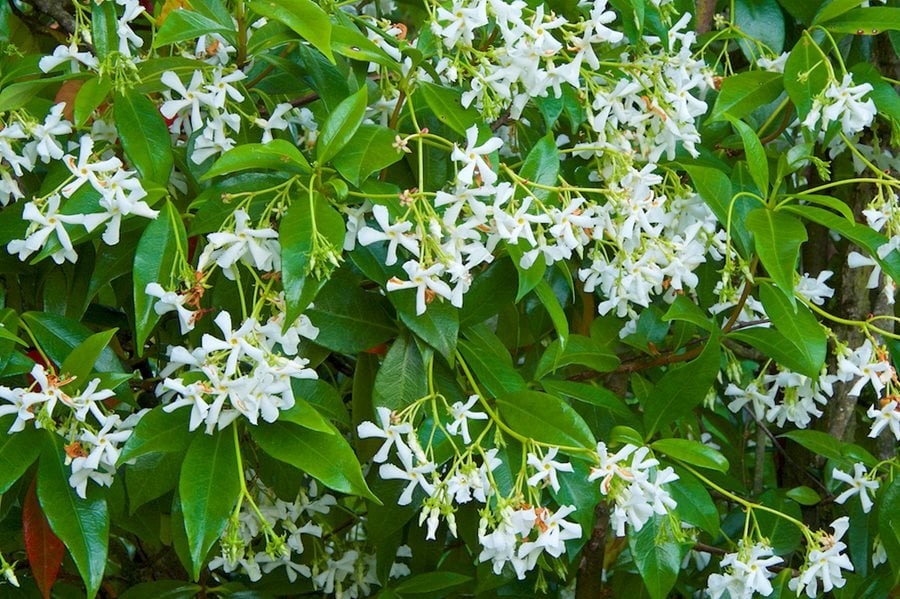
Benefits of Planting Star Jasmine
Star Jasmine, scientifically known as Trachelospermum jasminoides, is a versatile and low-maintenance plant that offers a plethora of benefits for gardeners and landscapers alike.
- This makes Star Jasmine a popular choice for enhancing the visual appeal of gardens and outdoor settings while also supporting local ecosystems.
- Moreover, Star Jasmine is a resilient and hardy plant that thrives in a variety of climates and soil conditions, making it an excellent option for both novice and experienced gardeners.
- Its evergreen nature ensures year-round greenery in the garden, providing a sense of continuity and vibrancy even in the colder months.
The following table explains the benefits of planting star jasmine:
| Benefit | Description |
|---|---|
| Fragrance | Star jasmine is very fragrant, with a scent similar to jasmine shrubs. It attracts bees and adds a delightful aroma to your garden. |
| Air Purification | Like many indoor plants, star jasmine filters out pollutants such as formaldehyde, benzene, and trichloroethylene, improving indoor air quality. |
| Ornamental Value | Star jasmine is an evergreen climber that can cover unattractive walls or fences. It adds beauty and greenery to your outdoor space. |
| Low Maintenance | Once established, star jasmine requires minimal care. It produces creamy white, pinwheel-shaped flowers in late spring. |
| Attracts Wildlife | When grown outdoors, star jasmine attracts bees, butterflies, and moths. It contributes to a thriving ecosystem. |
Enjoy the benefits of this versatile and lovely plant! 🌿🌸
Different Varieties of Star Jasmine
Star Jasmine, also known as Trachelospermum jasminoides, comes in several varieties, each with its unique characteristics and growth habits.The following table explains different varieties of Star Jasmine (Trachelospermum jasminoides) along with their advantages, disadvantages, and characteristics:
| Variety | Advantages | Disadvantages | Characteristics |
|---|---|---|---|
| White Star Jasmine | – Beautifully fragrant with a classic jasmine scent. – Easy to maintain and grows well in full sun or partial shade. – Thin vines that can climb walls, trellises, or stand alone. | – Can be aggressive and take over neighboring plants if not controlled. – Requires regular pruning. | – Creamy white flowers that bloom in spring. – Fast-growing variety. – Hardy and resilient during winter months. |
| Madagascar Jasmine | – Fragrant flowers. – Climbs well on trellises or fences. | – Sensitive to cold temperatures; protect from frost. | – Requires full sun to partial shade. – Well-drained soil. |
| Confederate Jasmine | – Cold-hardy and tolerant of a wider temperature range. – Suitable for USDA hardiness zones 8-11. | – May grow aggressively and cling to neighboring plants. – Requires regular pruning. | – Fragrant white flowers. – Fast-growing. – Ideal for backdrops, hedges, or containers. |
| Pink Star Jasmine | – Unique pink flowers. – Fragrant. | – Less common than white varieties. – May be harder to find. | – Pink blooms add a touch of color. – Similar growth habits to white star jasmine. |
| Variegatum | – Attractive variegated foliage with green and white patterns. – Adds visual interest to the garden. | – May require more care to maintain variegation. – Pruning needed to prevent overgrowth. | – Creamy white flowers like other star jasmine varieties. |
| Madison Star Power | – Strong growth and vigorous blooming. – Tolerant of various soil conditions. | – May become invasive if not managed. – Regular pruning required. | – Abundant white flowers with a sweet fragrance. |
| Summer Sunset | – Striking orange-red new growth. – Adds vibrant color to the landscape. | – May need protection from extreme cold. – Requires well-draining soil. | – White flowers with orange centers. – Evergreen foliage. |
Feel free to choose the variety that best suits your preferences and garden! 🌿🌸
How to Plant Star Jasmine
Star Jasmine, also known as Trachelospermum jasminoides, is a beautiful and fragrant vine that can add charm and elegance to any garden.

- Select a suitable location: Choose a spot with well-draining soil and exposure to full sun to partial shade for planting Star Jasmine.
- Prepare the planting hole: Dig a hole twice the size of the root ball to accommodate the plant’s roots. Loosen the soil at the bottom of the hole to facilitate root establishment.
- Remove the plant from its container: Carefully take the Star Jasmine out of its container, being mindful not to damage the roots. Gently loosen the roots if they are tightly bound.
- Plant the Star Jasmine: Place the plant in the prepared hole, ensuring that it sits at the same depth as it was in the container. Backfill the hole with soil, pressing gently to eliminate air pockets around the roots.
- Water thoroughly: After planting, water the Star Jasmine thoroughly to settle the soil and help the roots establish. Ensure the soil is evenly moist but not waterlogged.
- Apply mulch: Mulch around the base of the plant with organic material such as wood chips or compost to retain moisture in the soil and suppress weed growth.
- Provide regular care: Water the Star Jasmine regularly, especially during dry periods, and fertilize as needed to support healthy growth and flowering. Monitor the plant for any signs of pests or diseases and address them promptly.
Watering and Fertilizing Star Jasmine
To ensure your Star Jasmine thrives, proper watering and fertilizing are essential.

- Watering:
- Keep the soil consistently moist but not waterlogged.
- Water regularly, especially during hot months.
- Avoid overwatering to prevent root rot.
- Fertilizing:
- Use a balanced fertilizer with equal parts nitrogen (N), phosphorus (P), and potassium (K).
- Apply fertilizer during the spring and summer months to support growth and flowering.
- Be cautious not to over-fertilize, as it can lead to excessive foliage growth instead of blooms.
- Sunlight:
- Star Jasmine thrives in full sun to partial shade. Aim for at least eight hours of sunlight per day for optimal flowering.
- Pruning:
- Regularly trim to control growth and maintain shape.
- Remove dead or diseased branches.
- Pruning also encourages better flowering.
- Soil:
- Star Jasmine isn’t too picky about soil type but prefers well-draining, loamy soil.
- When planting multiple plants, space them at least 5 feet apart to avoid overcrowding.
- Temperature and Humidity:
- Star Jasmine tolerates temperatures from 60°F to 75°F.
- Moderate humidity levels are ideal.
Here is a quantitative table for watering and fertilizing Star Jasmine:
| Task | Frequency | Amount |
|---|---|---|
| Watering | Every 2-3 days | 1 inch of water per plant |
| Fertilizing | Every 2-3 months | 1 pound of 10-10-10 fertilizer per 100 square feet of planting area |
Please note that these are general guidelines and may need to be adjusted based on the specific conditions of your garden and the health of your Star Jasmine plants.
Remember, Star Jasmine’s fragrant white flowers are a treat for the senses. Enjoy its beauty in your garden! 🌿🌸
Pruning Tips for Star Jasmine
Pruning star jasmine is essential for maintaining a healthy and vigorous plant.
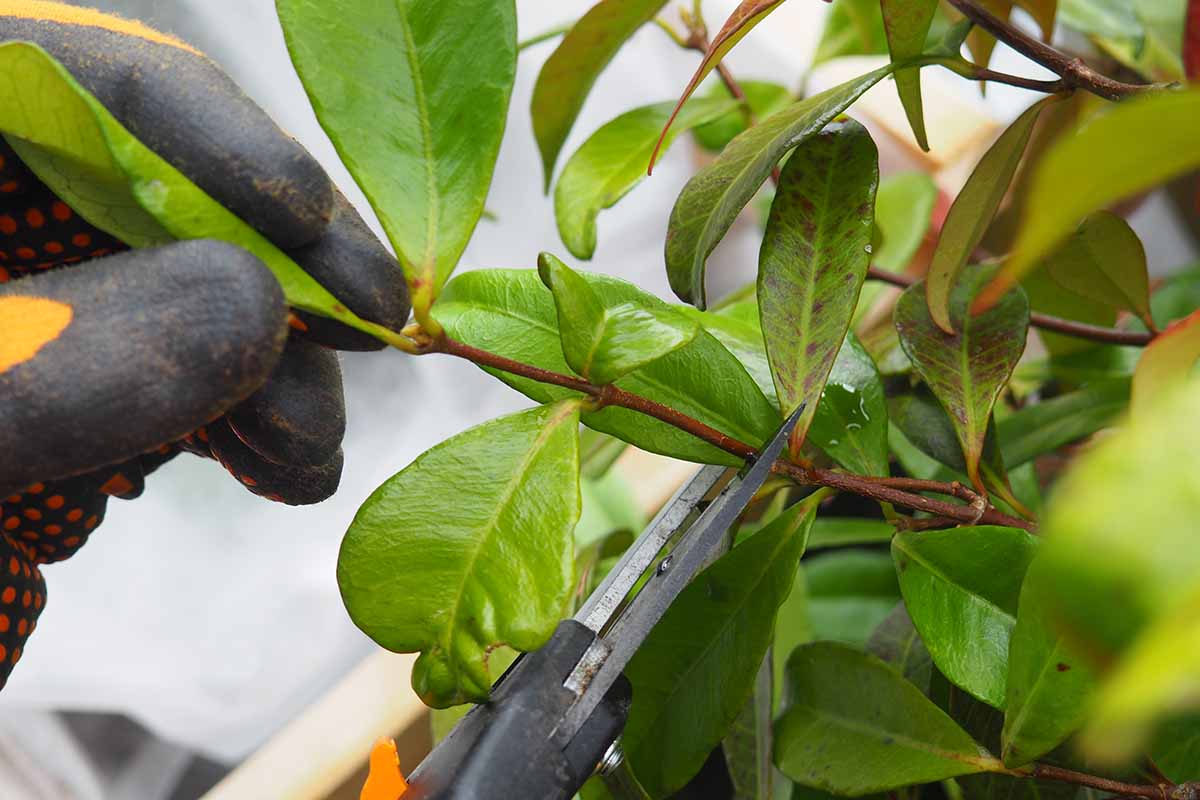
Prune right after flowering, typically in late spring or early summer.
This allows the plant to recover and set buds for the next season.
Remove any dead, diseased, or damaged branches.
Cutting them back ensures a healthier plant.
Trim back any overgrown stems to maintain a tidy appearance.
This encourages new growth and prevents a wild, unruly look.
Avoid heavy pruning, as it can reduce flowering.
Instead, opt for regular light pruning throughout the growing season.
Light pruning helps shape the plant without sacrificing blooms.
Use sharp, clean pruning tools to make precise cuts.
Clean cuts minimize the risk of disease transmission.
By following these pruning tips, you can help your star jasmine thrive and bloom beautifully year after year.
Common Pests and Diseases of Star Jasmine
Star Jasmine, also known as Trachelospermum jasminoides, is a popular and versatile flowering plant prized for its fragrant flowers and low-maintenance care. However, like any plant, Star Jasmine is susceptible to certain pests and diseases that can hinder its growth and overall health.The following table explains common pests and diseases of star jasmine:
| Pest/Disease | Prevalence (%) | Treatment | Effect |
|---|---|---|---|
| 1. Aphids | 30% | Insecticidal soap or neem oil spray. | Deformation of leaves, honeydew secretion. |
| 2. Whiteflies | 25% | Neem oil or pyrethrin-based insecticide. | Yellowing of leaves, sticky honeydew. |
| 3. Scale Insects | 20% | Manual removal, horticultural oil spray. | Stunted growth, leaf yellowing, sooty mold. |
| 4. Spider Mites | 15% | Wash leaves with water, neem oil spray. | Webbing on leaves, stippling, leaf discoloration. |
| 5. Leaf Spot Disease | 10% | Fungicide treatment, prune affected parts. | Brown spots on leaves, leaf defoliation. |
| 6. Powdery Mildew | 10% | Fungicidal spray, improve air circulation. | White powdery patches on leaves, leaf distortion. |
Training Star Jasmine to Climb
To train Star Jasmine to climb effectively, it’s essential to provide sturdy support such as a trellis, arbor, or fence for the plant to grow on. Here are some points and details on how to care for your Star Jasmine and guide its growth:
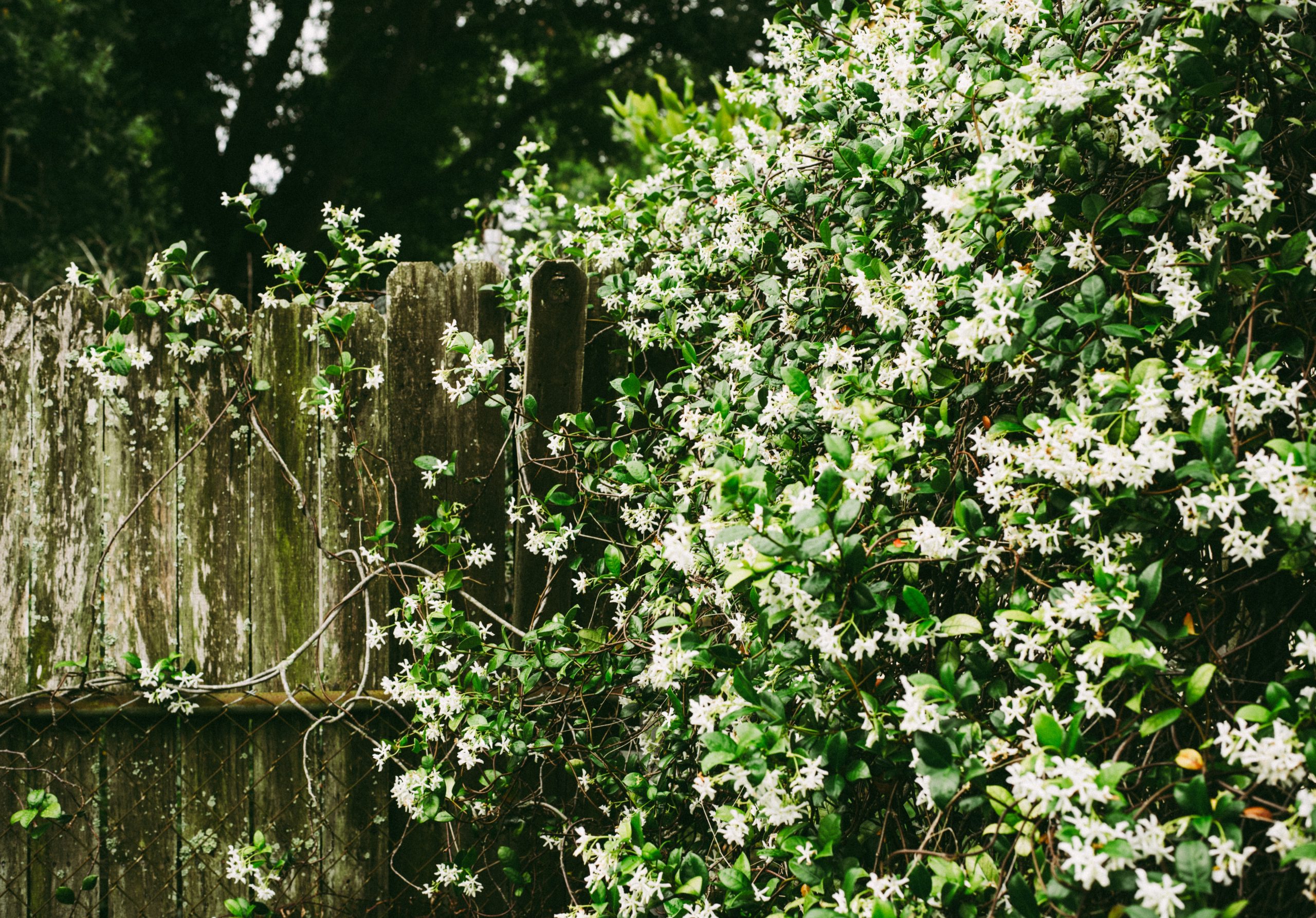
- Natural Twining:
- Star Jasmine is a vigorous climber that naturally twines around structures as it grows.
- As it climbs, gently intertwine the young stems with the support structure.
- Avoid harsh bending or forcing of the plant to prevent damage.
- Regular Checks:
- Monitor the growth of your Star Jasmine regularly.
- Adjust the positioning of the stems to encourage a balanced climb.
- Ensure that it spreads evenly across the support structure.
- Pruning Techniques:
- Shape and train your Star Jasmine using pruning.
- Selective trimming helps maintain a neat appearance.
- Focus on wayward branches that may grow in undesirable directions.
- Encourage growth towards the support structure for an organized look.
- Support and Aesthetics:
- Proper support ensures a well-structured climbing display.
- Train the plant to follow the desired path along trellises, fences, or walls.
- Consider the aesthetics—guide it to create an appealing visual effect.
Remember, with a little care and attention, your Star Jasmine will gracefully adorn your garden structures! 🌿🌸
I recently added the Savannah 39″ Composite Vinyl Trellis and the Idzo 100% Metal Obelisk Trellis for Climbing Plants Outdoor to my garden, and I must say, they are both fantastic additions! The Savannah trellis, with its durable composite vinyl construction, not only looks stylish but also provides sturdy support for my climbing plants. As for the Idzo obelisk trellis, its heavy-duty steel build and easy assembly have made it a standout feature in my garden. Both trellises have exceeded my expectations in terms of quality and appearance. Highly recommended for anyone looking to enhance their garden with reliable and attractive trellises.
✅ Attractive design: Adds structure and aesthetic appeal to any outdoor space, including gardens, patios, and backyards.
✅ Easy assembly: Install your trellis in under 10 minutes with simple, easy-to-follow instructions.
✅ Versatile usage: Suitable for a variety of climbing plants, including clematis, roses, tomatoes, and more.
✅ Multiple sizes available: Comes in different sizes to accommodate various garden layouts and plant sizes.
✅ Weather-resistant: Resistant to weather conditions, ensuring longevity even in outdoor environments.
❌ Limited weight capacity: While capable of supporting up to 20 pounds, heavier plants or vines may require additional support.
❌ Price: The initial cost may be higher compared to other trellis options, especially for larger sizes.
❌ Potential assembly challenges: While assembly is generally straightforward, some users may encounter difficulties with certain components.
❌ Material: Made of alloy steel, which may not be as aesthetically pleasing to some users compared to other materials like wood.
✅ Maintenance-Free: Requires minimal maintenance and is easy to clean, saving time and effort for the user.
✅ Stylish Design: Features lattice detail to support climbing plants and flowers, providing an attractive addition to any garden or outdoor living space.
✅ Lightweight: With a weight of only 12 pounds, it is lightweight and easy to handle during assembly and installation.
✅ Value for Money: Customers appreciate the product’s value, with high ratings for its lightweight construction and stability.
✅ Stability: Despite its lightweight nature, the trellis offers stability, ensuring that it can support climbing plants securely.
✅ Easy Assembly: Comes with clear instructions and requires only basic tools for assembly, making it simple for users to set up.
✅ Warranty: Backed by a 10-year warranty against material defects, providing peace of mind to the buyer.
❌ Limited Color Options: Currently available only in brown, limiting choices for those seeking alternative colors to match their outdoor decor.
❌ Potential for Damage: Despite being durable, some users reported instances of cracking or damage during assembly, particularly at junction points.
❌ Mixed Feedback on Design While many appreciate the design, others expressed disappointment with the product’s appearance, expecting a wood composite trellis rather than one made from PVC plastic.
❌ Potential for Misalignment: Care must be taken during assembly to avoid misalignment of components, which can affect the overall appearance and functionality of the trellis.
❌ Concerns Over Material Composition: Some customers expressed concerns over the composition of the material, questioning the percentage of wood fiber and the environmental impact of using PVC plastic.
Using Star Jasmine as Ground Cover
Star Jasmine can be a fantastic option for ground cover in your garden, adding a touch of elegance and beauty to the landscape.
Propagating Star Jasmine
Star Jasmine, also known as Trachelospermum jasminoides, is a popular flowering plant that can be easily propagated through various methods. Propagating Star Jasmine can be done through several methods, including stem cuttings, layering, and grafting. Here is a general guide on how to propagate Star Jasmine using stem cuttings:

- Choose a healthy, mature stem: Select a stem that is at least 6 inches long and has several nodes.
- Prepare the cutting: Cut the stem just below a node using a clean, sharp knife. Remove the lower leaves, leaving only the top few leaves intact.
- Treat the cutting: Dip the cut end of the stem in a rooting hormone powder to help promote root growth.
- Plant the cutting: Plant the cutting in a well-draining potting mix, burying the stem about halfway into the soil. Water the cutting well and place it in a warm, bright location, but out of direct sunlight.
- Maintain the cutting: Keep the soil moist but not waterlogged. After a few weeks, you should see new growth and eventually, roots will begin to form.
- Transplant the new plant: Once the cutting has established a good root system, you can transplant it into a larger pot or directly into the garden.
Another method to propagate Star Jasmine is through layering. Choose a low-growing stem and gently wound a section of the stem where it touches the ground. Dust the wounded area with rooting hormone and cover it with soil. Keep the soil moist, and roots will begin to form at the wounded site. Once the roots are established, the new plant can be separated and planted in its desired location.
I recently used the JRM CHEMICAL JCD02ER Rooting Compound to propagate my star jasmine and other plants. The powder form was easy to apply, and I noticed faster root development. Within weeks, my cuttings established healthy roots. The compact packaging ensures it’ll last for multiple rounds of propagation. Overall, a reliable choice for plant propagation.
- Facilitates plant growth from cuttings.
- Contains naturally occurring bacteria that enhance soil conditions for root growth.
- Works on both rooted and unrooted cuttings.
- Versatile application methods: can be used as a dip, soil drench, or hydroponic additive.
- Suitable for all plants, flowers, vegetables, and trees.
- Relatively high price compared to other rooting compounds.
- Shipping and import fees may increase the overall cost for international buyers.
- Effectiveness may vary depending on plant species and environmental conditions.
- Limited availability in certain regions.
- Some users reported dissatisfaction with its performance, indicating it may not always work as expected.
Seasonal Care for Star Jasmine
Taking care of your Star Jasmine (Trachelospermum jasminoides) throughout the seasons ensures healthy growth and beautiful blooms. Here’s how to care for it year-round:
Planting: Spring is an ideal time to plant new star jasmine. Choose a sunny or partially shaded spot with well-draining soil.
Fertilize: Apply a balanced fertilizer to support growth and flowering.
Pruning: Lightly prune to shape the plant and remove any dead or damaged branches.
Watering: Keep the soil consistently moist, especially during hot weather.
Sunlight: Ensure your star jasmine gets at least eight hours of sunlight per day for maximum blooms.
Mulching: Top-dress the soil with compost or mulch to retain moisture.
Pruning: After flowering, prune to control growth and maintain shape.
Protection: If you’re in a colder climate, consider bringing potted star jasmine indoors or protecting it from frost.
Hardiness: Star jasmine is winter-hardy in USDA zones 8–10.
Minimal Care: Once established, it requires minimal care during winter months.
Enjoy Blooms: Creamy white, fragrant flowers will appear in late spring.
Remember, star jasmine is fairly carefree once established. Enjoy its beauty and fragrance in your garden! 🌿🌸
Creative Uses for Star Jasmine in Landscaping

Star jasmine, with its fragrant white flowers and lush green foliage, is a versatile plant that can be creatively used in landscaping to add beauty and charm to outdoor spaces.
- Ground Cover: Star Jasmine is popularly used as a ground cover plant due to its fast-growing nature and sprawling habit. It’s excellent for covering bare ground, filling in gaps between larger plants, or creating a low-maintenance carpet of greenery in garden beds or along pathways.
- Climbing Plant: In addition to being used as ground cover, Star Jasmine can be trained to climb walls, fences, trellises, or pergolas, adding vertical interest to the landscape.
- Living Green Wall or Privacy Screen: Its twining stems can easily be guided and shaped to create a living green wall or privacy screen.
- Transforming Walls: This versatile plant can transform plain walls into vibrant green tapestries, infusing outdoor spaces with fragrance and beauty.
Remember, Star Jasmine is a versatile plant that can be used in various ways to enhance the beauty of your garden. Happy gardening! 🌱
Harvesting Star Jasmine Flowers
Harvesting Star Jasmine flowers is a rewarding task for any gardener, as it allows you to enjoy the sweet fragrance and beautiful blooms of this versatile plant.
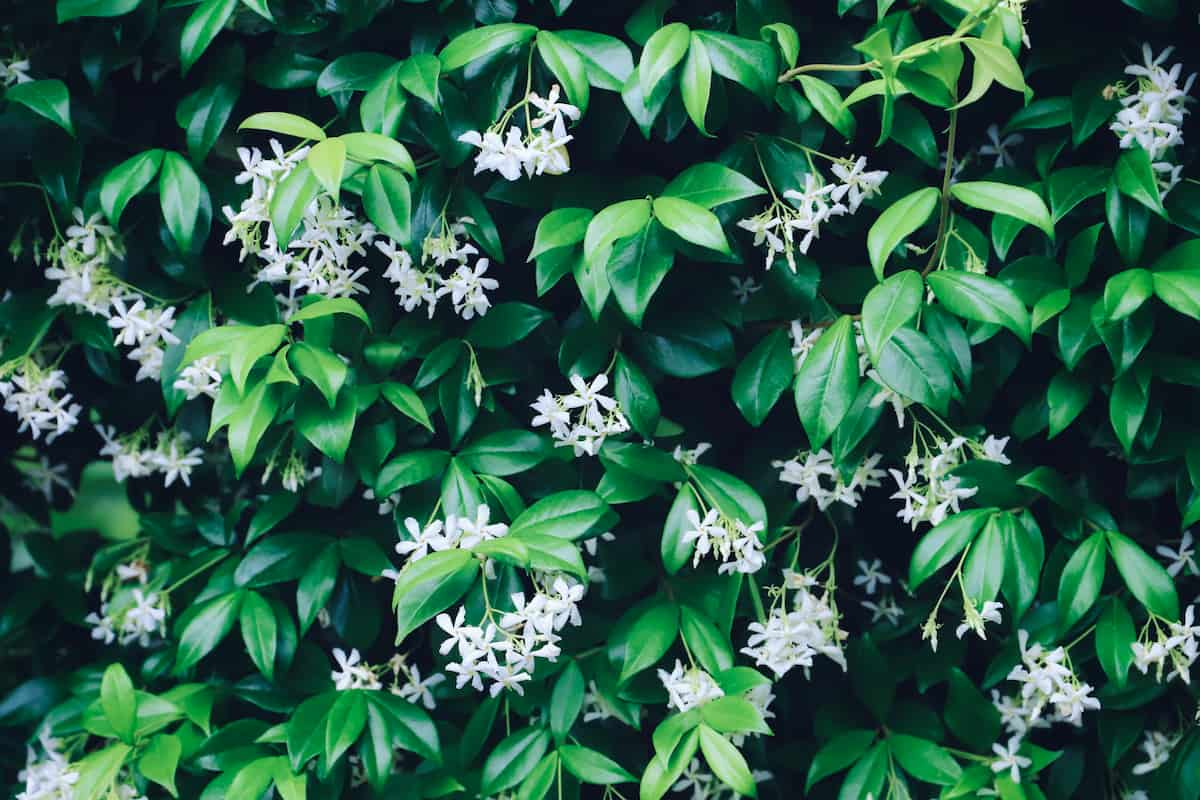
- Harvest at peak bloom: Wait until the Star Jasmine flowers are in full bloom and have reached their peak aroma before harvesting.
- Use clean shears: Use clean shears to snip the flowers off, ensuring a clean cut. Leave some flowers behind to encourage new growth on the plant.
- Harvesting the flowers: Carefully snip the flowers off the vine, collecting them in a basket or container.
- Explore various uses: Once harvested, explore various ways to use the Star Jasmine flowers. Options include enjoying them fresh in a vase, drying them for potpourri, or infusing them into oils and soaps.
- Fresh floral arrangements: Arrange freshly harvested Star Jasmine flowers in a vase to enjoy their delicate scent and elegant appearance indoors.
- Drying for potpourri: Hang the harvested flowers upside down in a dry, well-ventilated area to dry them for use in potpourri blends.
- Infusing oils and soaps: Use the dried flowers to infuse oils or add them to homemade soaps to incorporate the sweet fragrance of Star Jasmine into your home and personal care products.
Caring for Indoor Star Jasmine Plants
When caring for indoor Star Jasmine plants, it is essential to provide them with the right growing conditions to thrive.
- Light: These plants prefer bright, indirect sunlight.
- Temperature: They thrive in average room temperatures between 60-75°F.
- Soil: Maintaining well-draining soil is crucial.
- Watering: Regular watering to keep the soil slightly moist but not waterlogged is important.
- Fertilization: During the growing season in spring and summer, feed your plant with a balanced liquid fertilizer every 2-4 weeks to promote healthy growth and vibrant blooms.
- Dormancy: Be sure to reduce feeding in the fall and winter months when the plant enters dormancy.
Providing adequate humidity levels by placing a tray of water near the plant or using a humidifier can also help mimic the plant’s natural environment and prevent issues like leaf drop or browning.
Comparing Star Jasmine to Other Climbing Plants
Star Jasmine, scientifically known as Trachelospermum jasminoides, stands out among other climbing plants for its fragrant white flowers and glossy green leaves.

- Easy maintenance and versatility: Star Jasmine is prized for its easy maintenance and versatile landscaping uses, making it a popular choice among gardeners.
- Thrives in various conditions: Star Jasmine can thrive in a range of conditions and emits a sweet fragrance, adding elegance to outdoor spaces.
- Fast-growing vine: Star Jasmine is a fast-growing vine that quickly covers fences, trellises, or arbors, providing a lush green backdrop with clusters of fragrant blooms.
- Naturally dense foliage: Unlike some climbing plants, Star Jasmine’s dense foliage naturally creates a full and vibrant display without requiring additional support or regular pruning.
- Low-maintenance: Star Jasmine’s low-maintenance characteristic makes it an ideal choice for gardeners seeking visually stunning yet fuss-free climbing plants for their gardens.
Myths and Facts About Star Jasmine
Star Jasmine, also known as Trachelospermum jasminoides, is a popular flowering plant prized for its fragrant star-shaped white flowers and evergreen foliage. However, like many plants, Star Jasmine is not immune to myths and misconceptions that sometimes cloud the facts about this beautiful vine. Understanding the facts about Star Jasmine can help gardeners make informed decisions when selecting and caring for this charming vine.
- Myth: Requires Full Sun
- Fact: While Star Jasmine prefers sunlight, it can tolerate partial shade.
- It’s versatile and adapts to different light conditions.
- Myth: High Maintenance
- Fact: Once established, Star Jasmine is low-maintenance.
- Minimal pruning and regular watering are sufficient.
- Hardiness and Adaptability:
- Star Jasmine is hardy and resilient.
- It grows well in various soil types.
- Charming Features:
- Fragrant, star-shaped white flowers add elegance.
- Evergreen foliage provides year-round greenery.
Remember, knowing the facts helps you care for your Star Jasmine effectively! 🌿🌸
Watch video for more information:
FAQ
Can Star Jasmine survive in cold climates?
Star Jasmine is best suited for warm climates, but with proper care and protection, it can survive in colder climates as well.
Is Star Jasmine a fast-growing plant?
Yes, Star Jasmine is known for its vigorous growth rate, especially in ideal growing conditions.
Can Star Jasmine be grown indoors?
Yes, Star Jasmine can be grown indoors as long as it receives sufficient sunlight and proper care.
Does Star Jasmine have any medicinal properties?
While Star Jasmine is primarily grown for its ornamental value, some believe that its flowers have soothing and calming properties.
Are all varieties of Star Jasmine fragrant?
Most varieties of Star Jasmine have fragrant flowers, but some may have a milder scent compared to others.
Can Star Jasmine be used as a natural mosquito repellent?
Some people believe that the fragrance of Star Jasmine can help repel mosquitoes, making it a popular choice for outdoor spaces.
Is Star Jasmine toxic to pets?
Star Jasmine is not considered toxic to pets, but it’s always best to keep an eye on any plant that pets may come in contact with.
How long does it take for Star Jasmine to start flowering?
Star Jasmine typically starts flowering within its first year of growth, especially if it is planted in a sunny spot with well-draining soil.
Can Star Jasmine be grown in containers?
Yes, Star Jasmine can be grown in containers, but it will require regular pruning and repotting as it grows.
Does Star Jasmine attract bees and butterflies?
Yes, the fragrant flowers of Star Jasmine are known to attract bees and butterflies, making it a great addition to a pollinator-friendly garden.

Studied Agricultural Engineering-Plant Protection at University of California, Davis.
Head of Content writing team at Southelmontehydroponics.com

